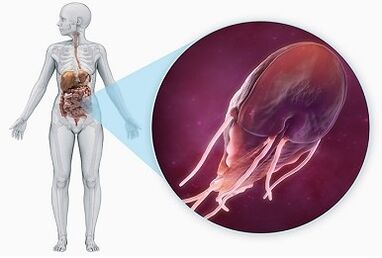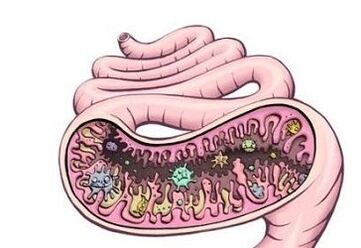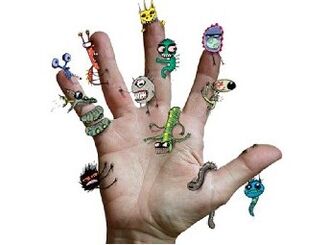A parasite is a form of interspecies interaction in which the representative of one type (parasitic) exists partially or completely, at the expense of the representative of another type (owner). A wide list of classified forms of parasitics that affect a person

Discovering parasites in arthropods, mollusks, worms, mushrooms, simple organisms is not the whole list. From a medical point of view, farmed bacteria and viruses are also parasites.
In this article, we will discuss the parasitic forms (protozoa) represented by the Kingdom of Property. Parasites are always an unpleasant and undesirable phenomenon, so in order to fight it effectively, you need to know as much as you can.
The representative of the kingdom is often called a single-celled organism. These are organisms composed only of a cell with a constant shape, such as cilia or cytoplasmic movements like amoeba.
Many protozoa are equipped with motor organs, represented in the form of flagella, cilia, or pseudopod. Their size fluctuates from microscopic to a few millimeters. The biological cage contains a group of organelles similar to organs of more complex organisms.
The kingdom represents nearly 15, 000 species, most of which live in aquatic and soil environments.
However, some single-celled organisms prefer parasitic lifestyles. A person's simplest parasites cause diseases such as protozoa - sometimes turning serious forms into death. Sometimes it is difficult to get rid of parasites in the body.
Protozoa have protective mechanisms - transfer of adverse environmental conditions in an inactive state. The unit is covered by a dense, indestructible shell, becomes a cyst and can be long in this non-receptor form. Incest is also used by the easiest allocation.

Species Differences
The simplest person of a person is structurally different, and is the way to introduce it into the body and cause illness. To obtain the best information structure, the table briefly describes the main materials about single-cell organisms.
Some representatives of protozoa parasitism in humans, their brief description:
| Types, diseases and systems that cause organs to be damaged | symptom | Infection mode, carrier | Infection phase of parasite life cycle |
|---|---|---|---|
| The class is flagellum | |||
|
Dermatological leishmaniasis is characterized by the formation of necrotic ulcers in affected areas of the skin. Visceral Leish poisoning causes acute inflammatory responses to the affected organs, with ulcers and bleeding. | They bite the mosquito with saliva and fell into the blood. Vector - Warm animals, including humans; vectors are mosquitoes. | Proflagellate (maxillary body shape). |
|
Enteritis, allergies, asthma, depression, neurological diseases, cracks, dry skin, cholecystitis, etc. | Fecal caliber infected by food and water. Carrier - Warm animals, including humans; carriers - Descending insects (flies, cockroaches). | The stage of cyst. |
|
Itching, burning in the genital area, discomfort during urination, unhealthy excretion of the genitals. Complications of development of infertility are possible. | Sexual pathways of infection; through the mouth; through the rectum; when air is inhaled; parasites can be transmitted from the mother to the child during childbirth. The carrier and the carrier are one person. | Any stage of the life cycle: flagella (adult), amoeba (intermediate, most invasive), cysts. |
|
Increased lymph nodes, pathological processes in the liver of the spleen, and damage to the nervous system is characterized by excessive drowsiness and often fatal results. The disease lasts for two years. | During the insect's meat bite, it enters the blood; when blood is poured. Carriers are warm animals, including humans, carriers - Tseche (African tertiary disease) flight, tritomic a bug (American trisomyces). | Trypanosoma stage (character of membrane oscillation and mobility ability). |
| Spores | |||
|
The underlying and chronic forms are asymptomatic; the acute forms are symptoms from the affected organs. The most dangerous thing for pregnant women and newborn children is the serious disease and congenital pathology that leads to fetal death. | Through raw milk, meat infected with feces; bites with insects; during pregnancy from mother to child. Harsh and carriers are warm animals, including humans. | The stage of cyst. |
|
Increased body temperature, chills, and fever can cause severe kidney lesions, nervous system, and may lead to fatal results. | When biting insect saliva, it enters a person's blood flow; when it spreads from the mother to the child during pregnancy; when it falls blood. The vector is a person, and the vector is a malaria mosquito. | The stage of sporidia (the final form of the sporiks sexual cycle). |
| Infusoria class | |||
|
Mucosal ulcers in the large intestine are accompanied by diarrhea in the blood network, which often leads to fatal results. | Fecal caliber infected by fruits, vegetables, raw pork. The carrier is a pig, a carrier - modern insects (flies, cockroaches). | The stage of cyst. |
| Sarcodes class | |||
|
The form of disease is asymptomatic and coma. Intestinal diarrhea and vomiting are manifested. Externally ground amoebasis is characterized by acute lesions in the liver, lungs, and other organs. | Fecal caliber infected by vegetables, fruits, and green infection; anal sex. The vector is a warm animal, usually a human, a vector - modern insects (flies, cockroaches). | Stage of tetranuclear cyst. |
Generally, for all protozoa, a very complex and multi-stage life cycle is characterized by a very complex and multi-stage life cycle that includes different forms, activity levels and stage function phases.
Single-cell organisms most often occur through simple cell division in both, but certain categories, as well as division, are also inherent in the more complex reproductive processes that exchange genetic information during more complex reproductive processes, for example, representatives of flagellar classes.
Furthermore, the life forms of protozoa are not common in all classes. Each stage of the parasite life cycle can occur in organisms of different species of animals.

Therefore, some of them are persistent owners, vectors of parasites, while others play the role of carriers of infection. Similarly, individual stages of the life cycle can occur within the same person, but in different organs.
The symptoms of invasion depend on the stage of the parasite's life cycle, based on the body's resistance, infection and location. Often, the disease is accompanied by nonspecific symptoms, so the diagnosis of protozoa infection is always very difficult.
According to the latest data, more than 1 billion people have been infected with parasites. Worst of all, parasites are hard to detect.
- nervous, weak, lethargy;
- Frequent headaches;
- itching, allergic reaction;
- Smelling patches on teeth and language from your mouth;
- weight change;
- diarrhea, constipation and stomach pain;
- Chronic disease is intensifying.
All of these are possible signs of parasites in your body. Parasites are very dangerous and they can cause fatal diseases. Diseases caused by parasites take a chronic form.


















